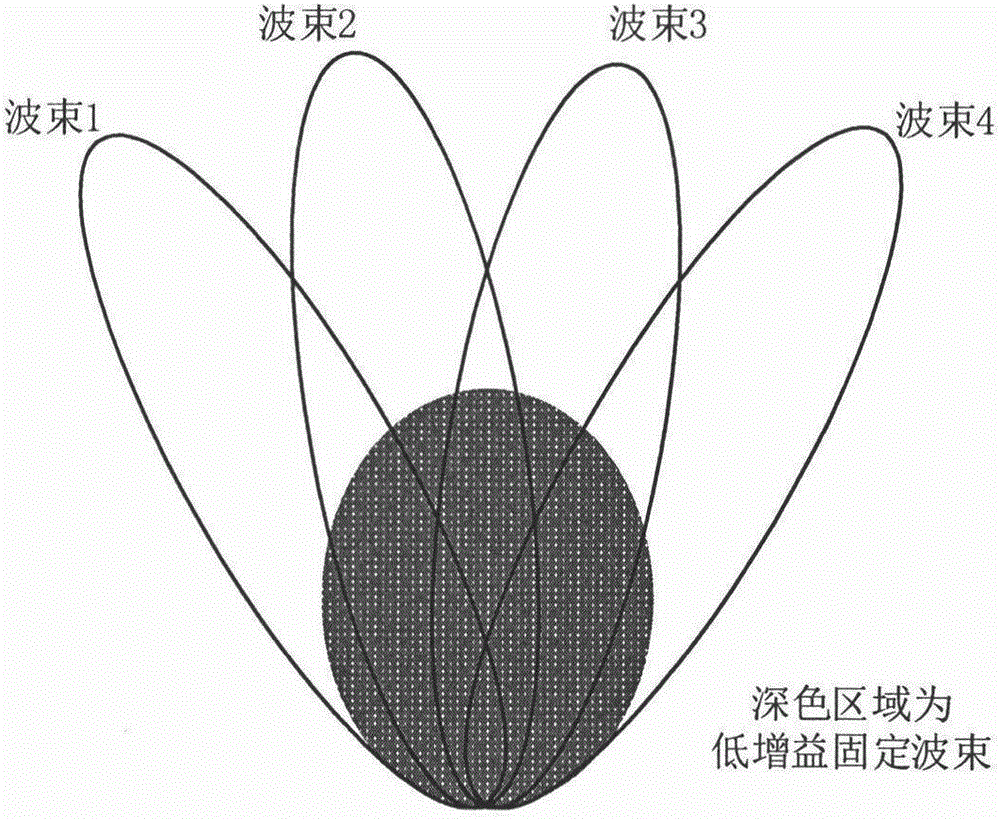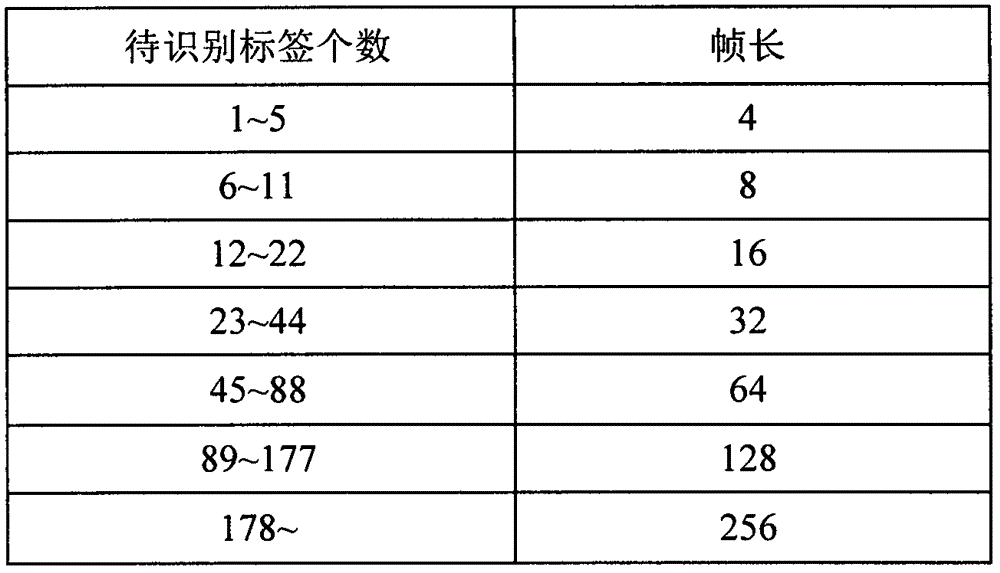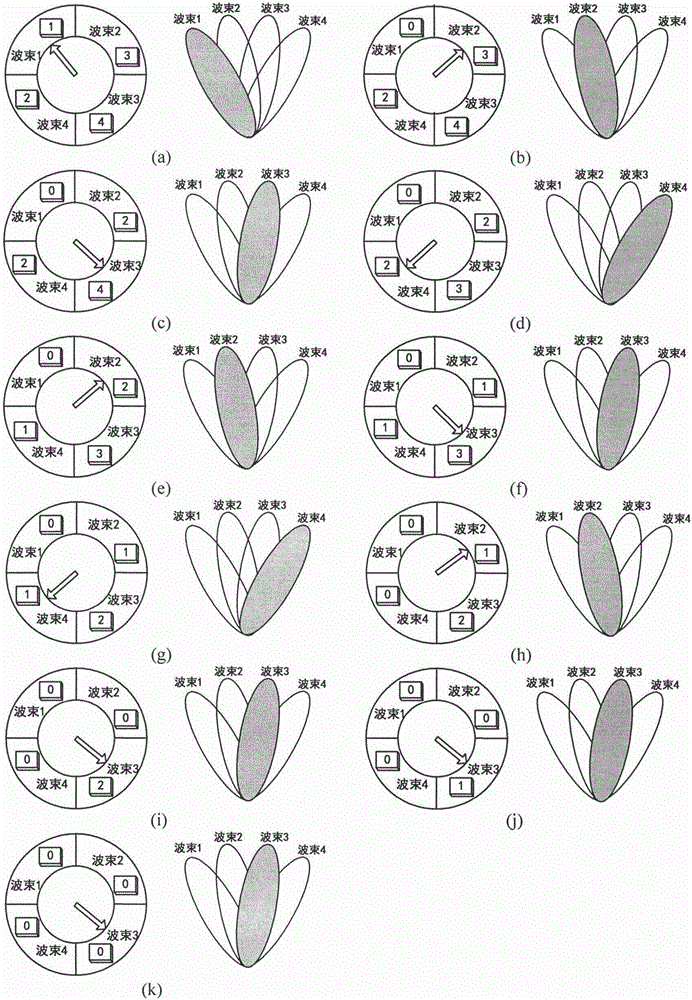Smart antenna self-adaptive control algorithm of fixed dwell time
An adaptive control, dwell time technology, applied in computing, electromagnetic radiation induction, induction record carrier, etc., can solve the problem of no beam switching adaptive control algorithm and so on
- Summary
- Abstract
- Description
- Claims
- Application Information
AI Technical Summary
Problems solved by technology
Method used
Image
Examples
Embodiment Construction
[0021] The gist of the present invention is to propose a smart antenna adaptive control algorithm with a fixed dwell time, which can determine the dwell time and scanning interval of the beam according to the number of tags in each beam direction, communication time, etc., to achieve automatic Adapt to the purpose of controlling the beam, and at the same time reduce the recognition time, improve the tag recognition rate, and reduce energy consumption. The embodiments of the present invention will be further described in detail below in conjunction with the accompanying drawings.
[0022] 1. Chebyshev inequality algorithm estimates the number of labels
[0023] Assuming that there are a total of n tags to be identified within the recognition range of the reader, and the frame length is L, the probability of r tags occupying a time slot obeys the binomial distribution, namely:
[0024] P ( r , n ,...
PUM
 Login to View More
Login to View More Abstract
Description
Claims
Application Information
 Login to View More
Login to View More - R&D
- Intellectual Property
- Life Sciences
- Materials
- Tech Scout
- Unparalleled Data Quality
- Higher Quality Content
- 60% Fewer Hallucinations
Browse by: Latest US Patents, China's latest patents, Technical Efficacy Thesaurus, Application Domain, Technology Topic, Popular Technical Reports.
© 2025 PatSnap. All rights reserved.Legal|Privacy policy|Modern Slavery Act Transparency Statement|Sitemap|About US| Contact US: help@patsnap.com



